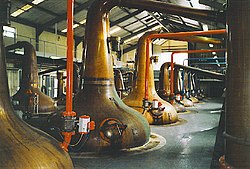




Homecoming Scotland 2009 was a series of events designed to attract people of Scottish ancestry to visit Scotland. The campaign, organised by EventScotland and VisitScotland on behalf of the Scottish Government, and part-financed by the European Regional Development Fund, claimed that "for every single Scot in their native land, there are thought to be at least five more overseas who can claim Scottish ancestry."
Contents
2009 was the 250th anniversary of the birth of Robert Burns, the national poet. In addition to Burns-related events, the other four themes of the Homecoming were Scotland's culture and heritage, great Scottish minds and innovations, and golf and whisky. [1]